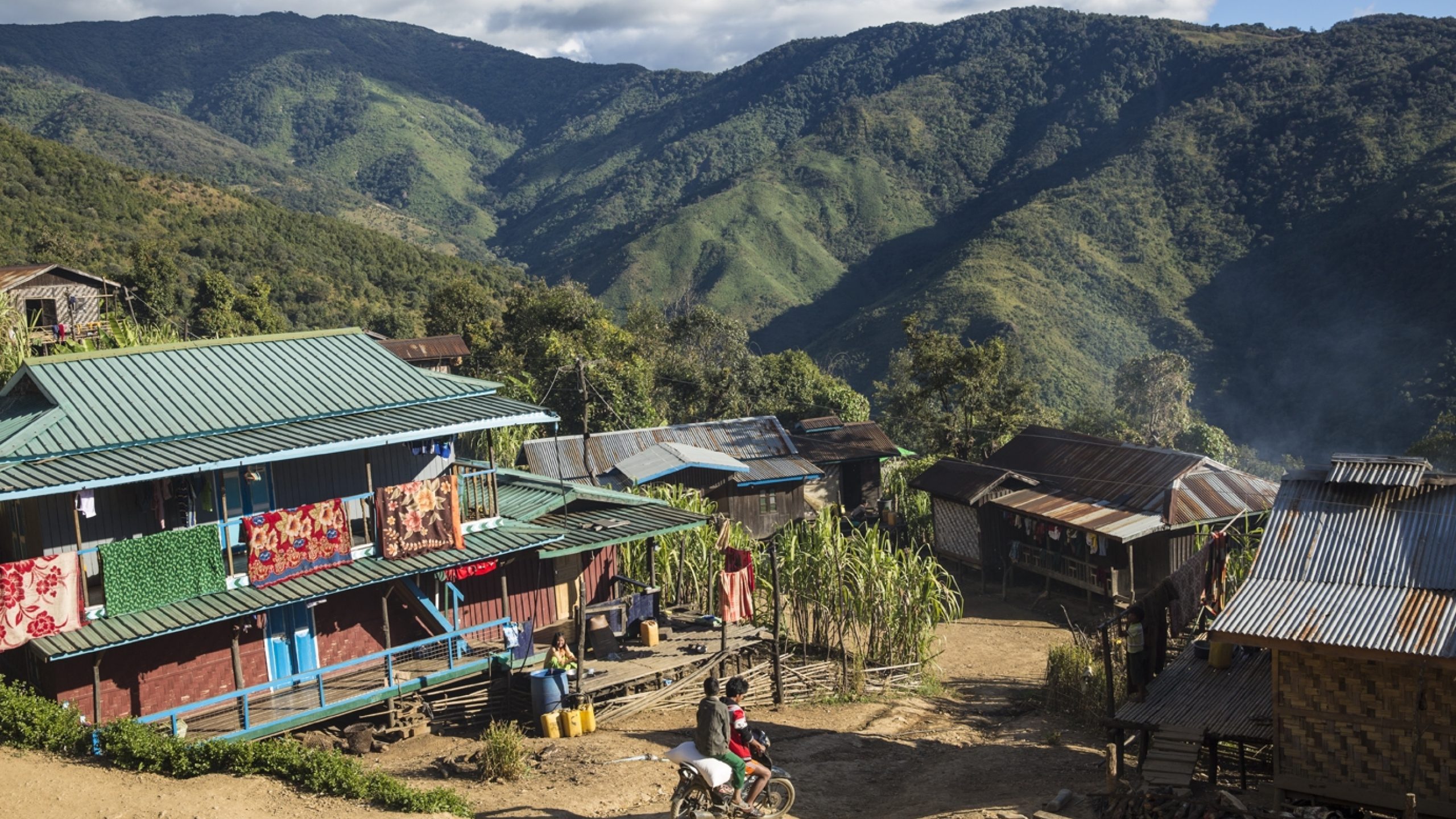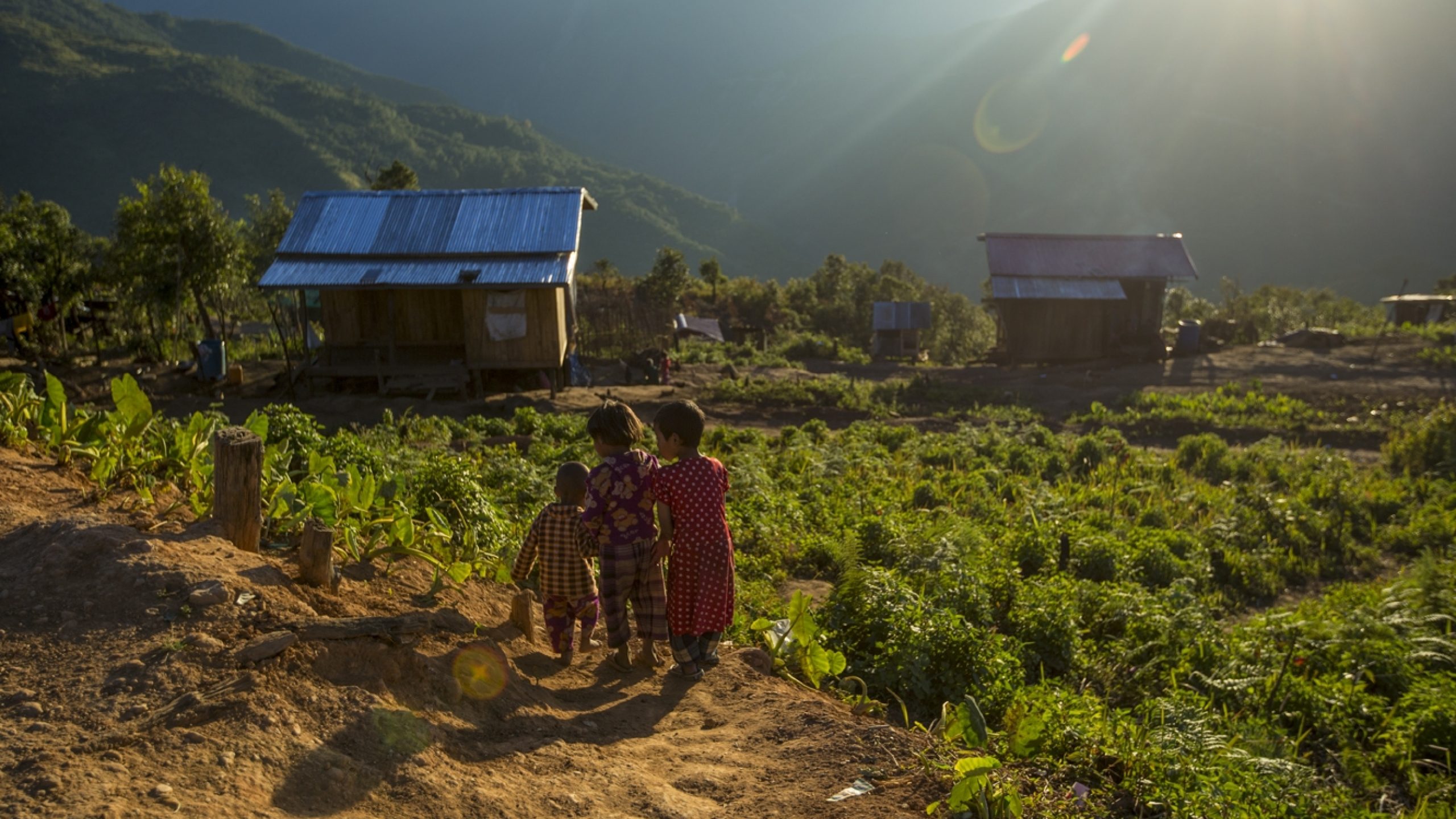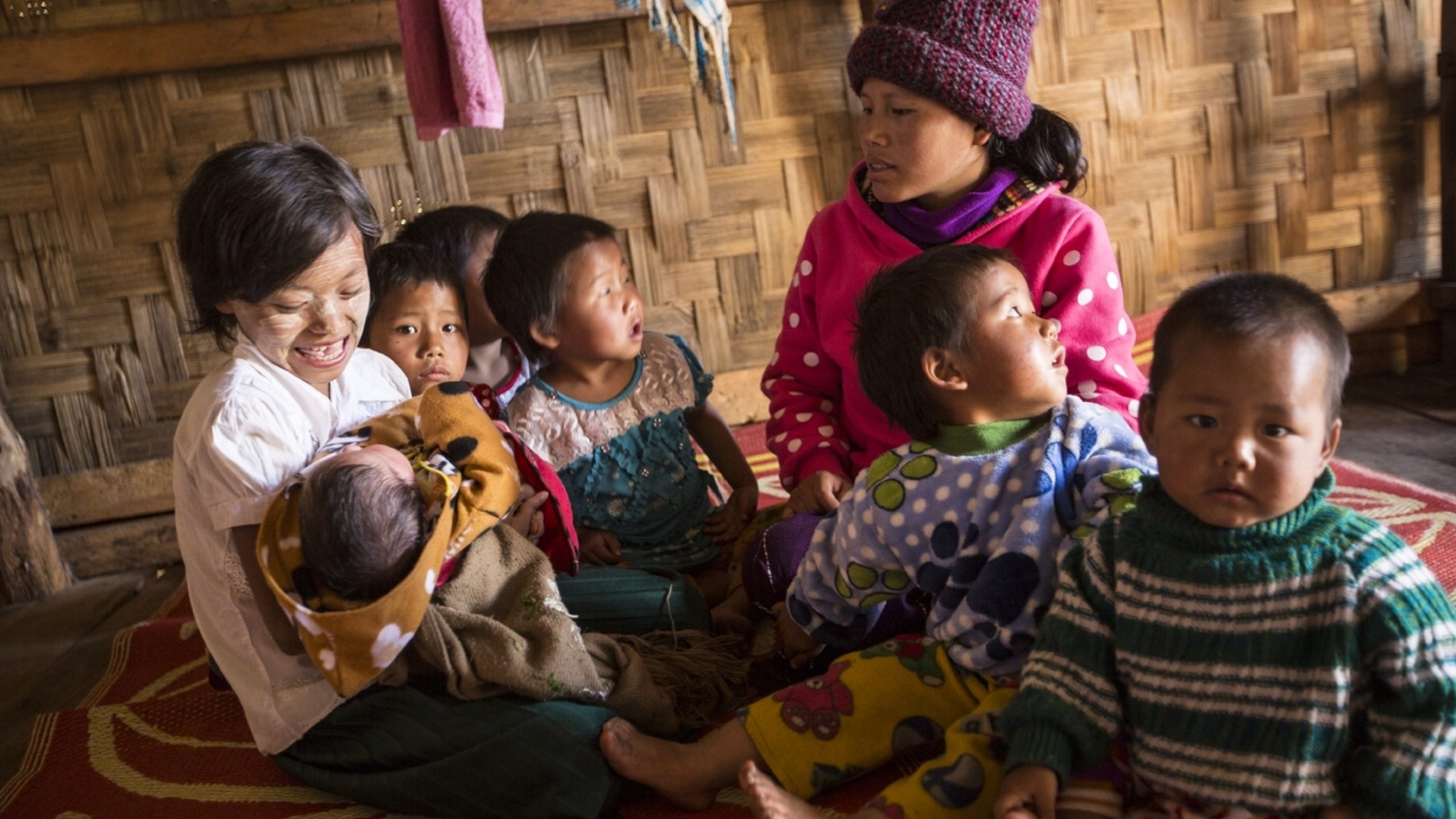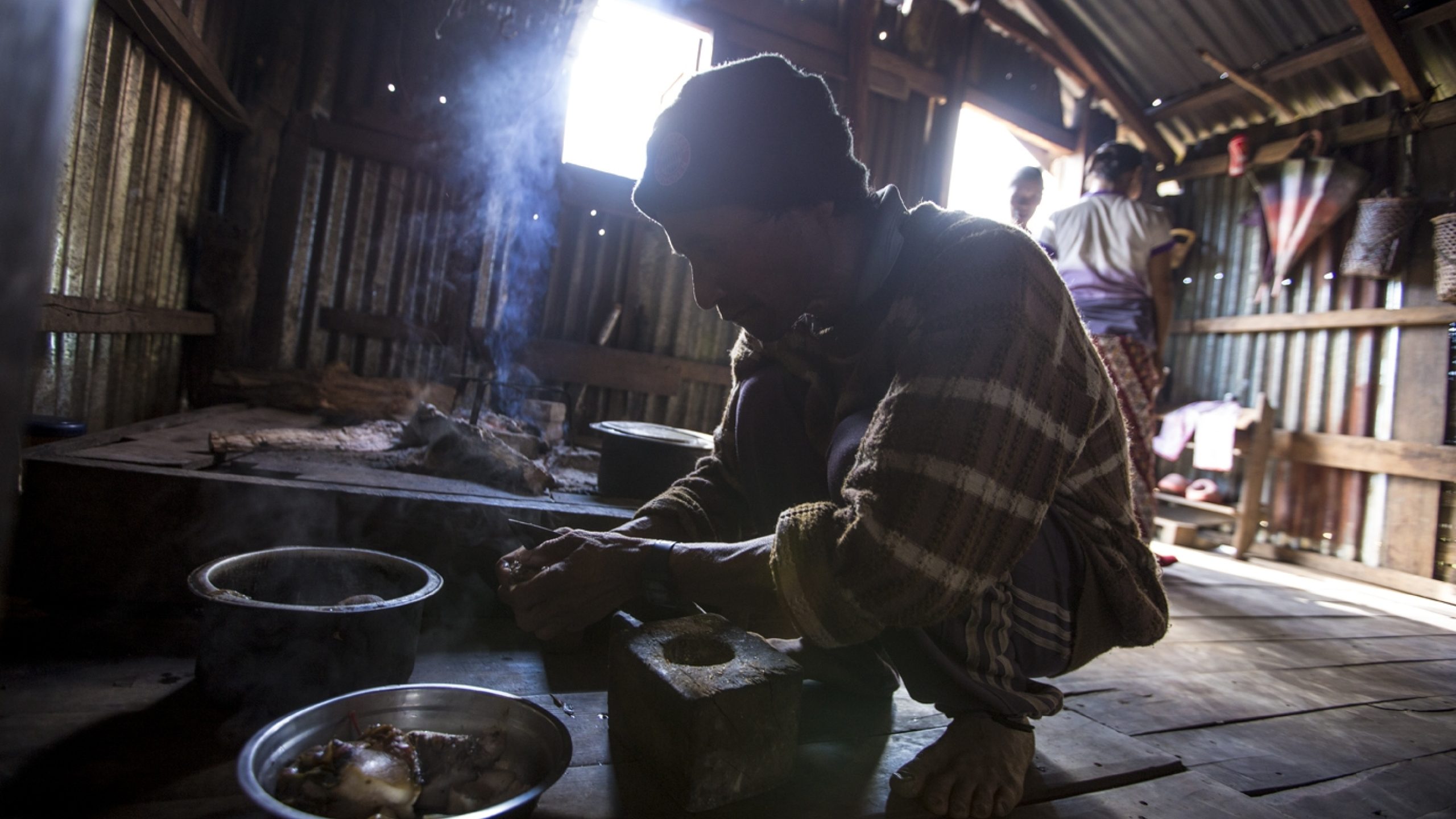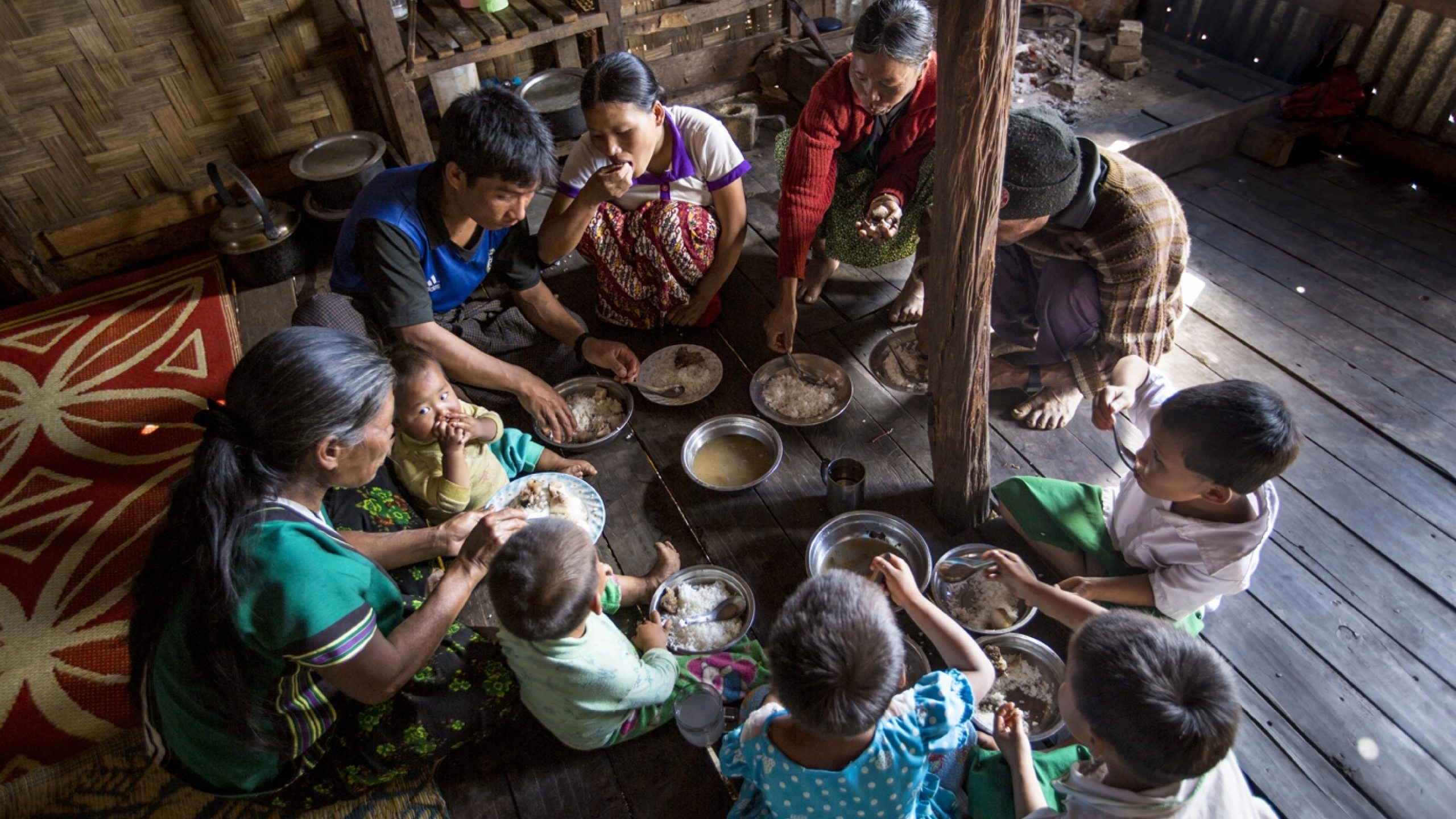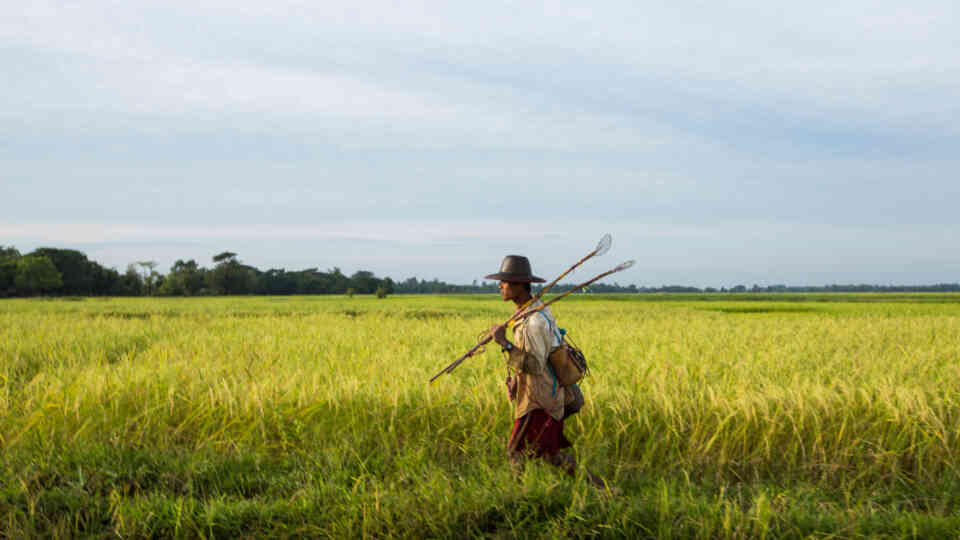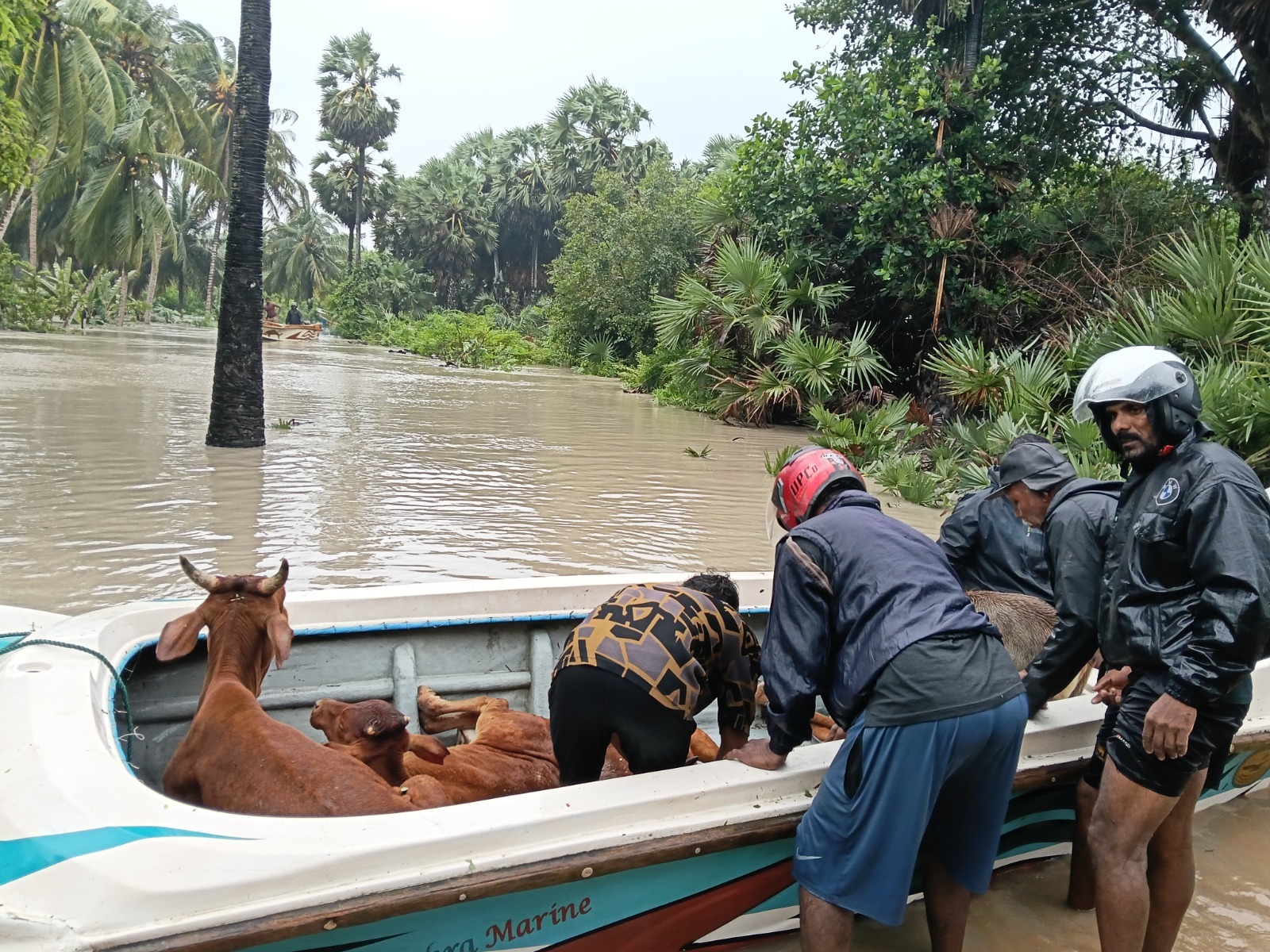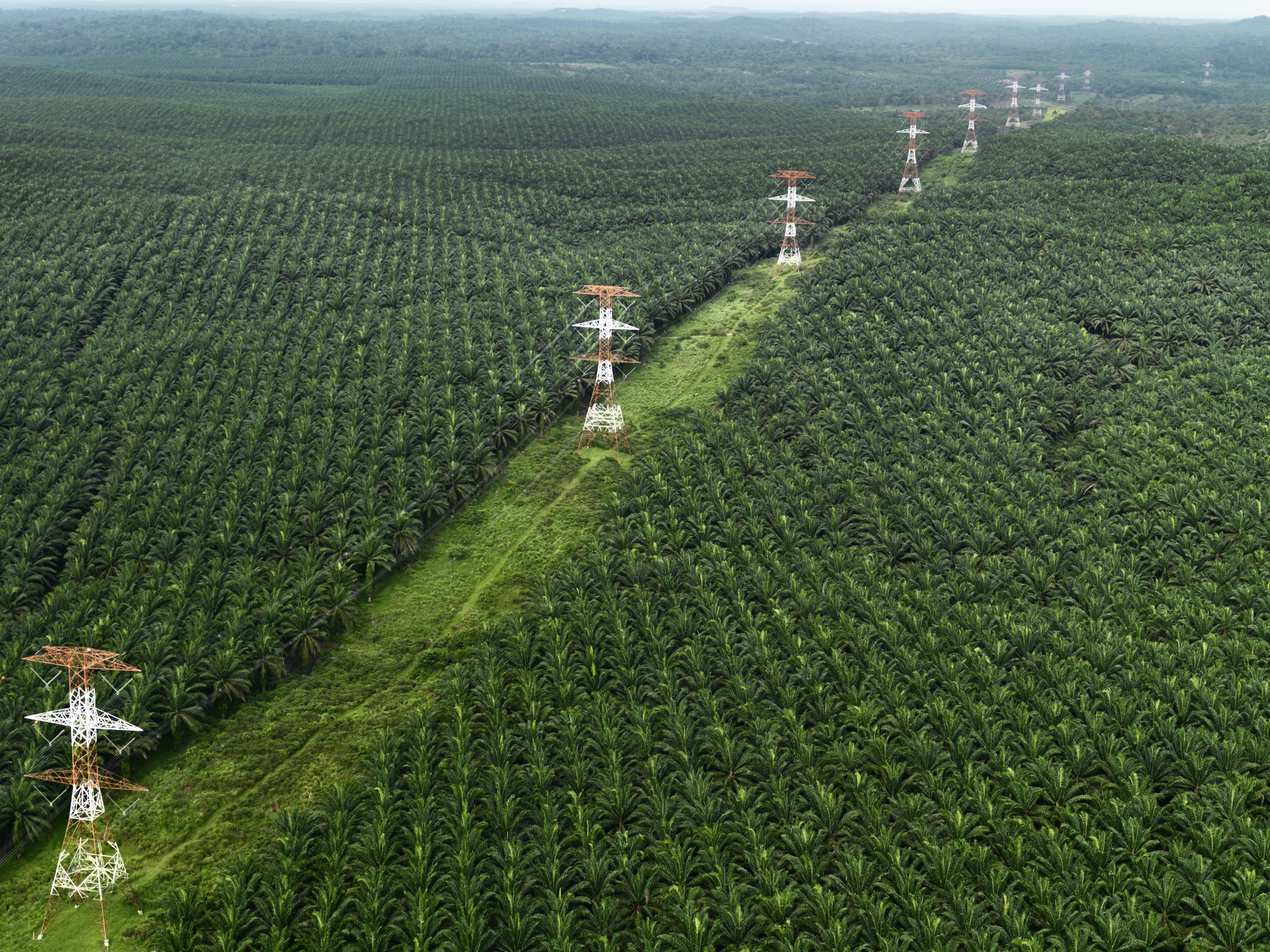The United Nations Office for Project Services (UNOPS)

Midwives making a difference in Myanmar
The long distance from hospitals can be life-threatening in an emergency for pregnant women in rural Myanmar.
Journey
Journey
Daw Mana Kee Pai was pregnant with her fifth child when she started to experience labour complications.
“I was scared when the baby’s arm came out so I immediately called the auxiliary midwife,” said U Gee Tung Mon, Kee Pai’s husband. The auxiliary midwife immediately referred his wife to the hospital in Mindat, several hours away.
The bus from Lon Pang to Mindat only comes twice a week. It normally waits a few hours for passengers before departing. But Kee Pai didn’t have hours.
Tung Mon convinced the bus driver to leave immediately and head straight for the hospital – his wife and baby’s lives were at stake. He had reason to worry.
The maternal mortality ratio in Myanmar is 282 per 100,000 live births – the highest in Southeast Asia.1 And 87 percent of the country’s maternal deaths occur in rural areas, where infrastructure is poor and access to reproductive healthcare is limited.2
1 Source: Myanmar Census
2 Source: UNFPA
Seeking help
Seeking help
Kee Pai was immediately rushed into surgery when she arrived at the hospital.
“Your wife can survive. We will do everything we can,” the doctor explained to Tung Mon. “But your baby’s condition is not good.”
“I kept praying. I was praying while waiting in front of the operating room.”
...but your baby's condition is not good.”
The Three Millennium Development Goal Fund’s (3MDG) referral programme exists to ensure that women like Kee Pai – mothers-to-be with high-risk pregnancies living in remote areas – get to hospitals in an emergency.
For people living in rural areas, the cost to seek care at the hospital, especially for maternal and child health emergencies, can be catastrophically expensive. The referral programme covers transport, attendant, food and other costs, helping to save lives and ease families’ financial hardship.


For Kee Pai, the referral programme saved her and her son Pascal’s lives. “The doctor said if it took too long or if we’d come to the hospital too late, both of us would have died as the uterus was torn already,” she explained.
Since then, she and her husband have welcomed their sixth child into their family. Once home, the older children come out to meet their new sibling. Later, Tung Mon plays with the older kids outside, allowing new mother Kee Pai to rest.
Local midwives
Local midwives
In many areas of Myanmar, there are geographical challenges to reaching expectant mothers in need. In Chin State, the terrain is so difficult that some people have to walk for four days to get to the hospital.
The 3MDG maternal, newborn and child health programme works to ensure midwives see pregnant women at least four times during their pregnancy, to make sure they have the best treatment from the beginning.
Midwives like Daw Naing Ngai Awi working in the villages get the medical history of pregnant women during their first antenatal visit.

Initially, Ngai Awi wasn’t interested in becoming a midwife. But she went through midwife training after her father suggested it. After seeing the day-to-day impact of midwives’ work, she had a change of heart.
“This job is very noble as we can save the lives of people,” said Ngai Awi. “Whenever I save the lives of mothers and babies, I am very happy. I can’t express my feelings in words.”


Support from 3MDG and implementing partners help midwives make more outreach visits. If a woman has given birth before, midwives ask about previous deliveries and old scars that could hint at past caesarean sections, in order to spot potential complications – and issue a referral ahead of time.
By keeping an eye out for danger signs and arranging referrals when necessary, midwives help increase the chances that both mothers and children survive difficult labour.
Project details
Project details
3MDG supports emergency referrals in 41 townships in Myanmar. Even when health services are in place, people can face barriers reaching them, including distance, cost, embedded beliefs about health services, lack of trust, stigma and discrimination.
3MDG’s emergency referrals help overcome many of these barriers by supporting health workers with detecting and referring pregnant women and children under the age of five who need emergency care. From 2013 to mid-2017, 55,000 emergency referrals were issued to pregnant women in 3MDG-supported townships.
The emergency referral programme is implemented in partnership with Myanmar’s Ministry of Health and Sports, the Danish Red Cross and the Myanmar Red Cross Society. 3MDG is supported by its four donors: the Governments of Sweden, Switzerland, the United Kingdom and the United States. UNOPS is the fund manager for 3MDG in Myanmar.







